Estimated reading time: 5 minutes
- Animals’ nutritional requirements vary continuously, and are directly related to the stage of production and quality of available roughage.
- The main goal during the maintenance phase is to prevent weight loss.
- The mating phase begins two to four weeks before mating or synchronisation, and lasts until at least two weeks after mating, insemination or laparoscopy.
- The focus during the early and mid-gestation phase is on maintaining the ewe’s body condition score.
- To fully unlock her genetic production potential, the ewe must be healthy and free from any metabolic disorders such as milk fever, udder oedema and ketosis.
Animals’ nutritional requirements vary continuously, and are directly related to the stage of production and quality of available roughage. If the ewe is to reach her full potential, then the different nutritional principles of her respective production stages have to be met.
Maintenance of open animals
The main goal during the maintenance phase is to prevent weight loss. This period commences after weaning and ends two to four weeks prior to mating. In a 12-month system this period will last approximately 90 days, but in an eight-month system it will last only 14 days or even less. This is the ‘cheapest’ phase in terms of supplementary feed.
A minimum of 30g of crude protein must be supplemented daily on dry veld, and 1g of phosphorus on green veld. Trace elements should be supplemented throughout.
Read more about how to choose an efficient sheep farming system here.
Preparing for mating
This phase begins two to four weeks before mating or synchronisation, and lasts until at least two weeks after mating, insemination or laparoscopy. This phase can extend from 45 to 65 days, depending on the type of lambing system.
In order to establish a rising growth trend, the focus during this phase is on the ewe’s body condition (target score of 3 to 3,5). It stimulates the ovulation rate, as well as optimal attachment of and nutrition for the embryo.
Providing flush feed to ewes allows for up to 20 more lambs to be weaned per 100 ewes. An effective flush supplement on dryland must provide at least 60g of high-quality crude protein and energy daily. Lower levels can be given to ewes on greenfeed, as it is high in good quality crude protein and energy.
Early and mid-gestation
The focus during this phase is on maintaining the ewe’s body condition score. The phase lasts approximately 100 days. Maintain nutritional supplement levels that are slightly above maintenance levels – this will allow the placenta to develop as it should. Poorly developed placentas lead to weak, light lambs and a lower survival rate.
Ewes that are grazing veld during this phase should receive between 40 and 50g crude protein. Trace element supplementation should not be neglected either, as it has a major impact on the performance of the unborn lamb later in its life (also known as generational nutrition).
Learn how to combat nodular worm in sheep here.
Late gestation
Preparing ewes for lambing is characterised by a rising nutritional trend. The late gestation period is a make-or-break phase that starts six weeks prior to lambing. The ewe’s nutritional requirements increase significantly during this period, as 70 to 80% of foetal growth as well as foetal wool follicle development are taking place, and the udder is preparing for colostrum and milk production.
Supplementary nutrition combined with high-quality crude protein (less non-protein nitrogen sources such as urea, and more natural protein sources such as oilcake which provides amino acids), balanced energy and minerals are vital during late gestation. This will ensure quality colostrum, maximum milk production and resultant optimal lamb survival.
To fully unlock her genetic production potential, the ewe must be healthy and free from any metabolic disorders such as milk fever, udder oedema and ketosis. The latter is easy to counteract using a correctly balanced supplement of energy, crude protein, minerals and vitamin A.
This supplement should also contain anionic salts to help prevent milk fever. Seeing as milk fever is usually the precursor to all other metabolic disorders, preventing milk fever will automatically lower the risk of other related problems.
Early lactation
Early lactation spans the first 30 days after lambing. The ewe’s nutritional requirements are at its highest during this phase and her crude protein requirements can be as high as 300g/day (3,5 times higher than during maintenance). This is because milk production increases exponentially after birth, and reaches a peak at 28 to 30 days in milk. Her feed intake should preferably not be restricted at this time; she must have unlimited access to high-quality feed (either green feed combined with a supplement, or complete balanced feed).
Keep a close watch on the udders for conditions such as mastitis that require the ewe to be quarantined and treated immediately.
Learn more about yesteryear’s sheep production methods here.
Mid- and late lactation
This period comprises the last 30 and 60 days respectively of lactation for intensive and extensive lambing systems. The ewe’s nutritional requirements will start to decline and the level of nutrition must be adjusted downwards. Note that the quality of the feed must remain unchanged and intake be only slightly restricted.
When using supplements, intake can be cut by around 40% and reduced further when it gets closer to weaning. This helps to prevent udder problems after weaning and is also more cost-effective, without compromising the production of ewes and lambs. By this time, lambs will also be familiar with consuming creep feed. – Dr Josef van Wyngaard, technical manager, Voermol
For more information, contact Dr van Wyngaard on 082 336 0626 or josef.vanwyngaard@tongaat.com.





